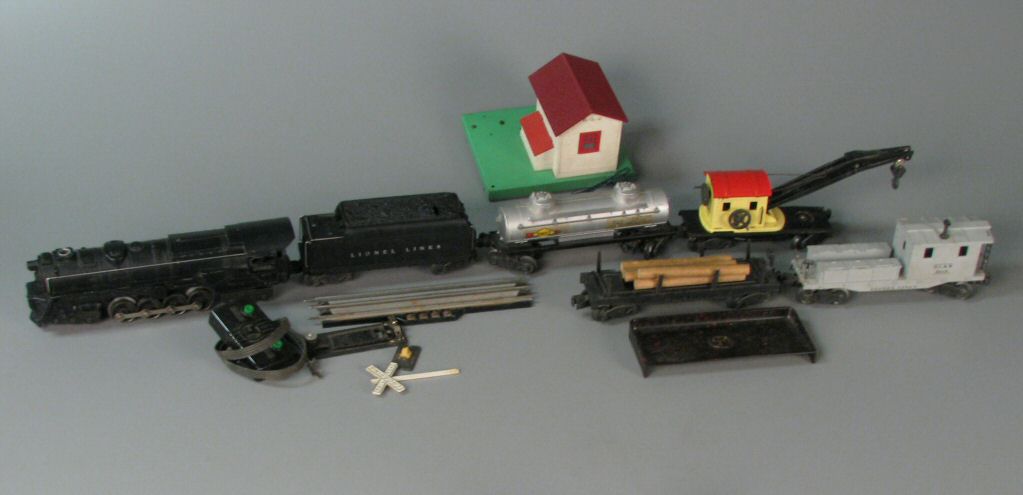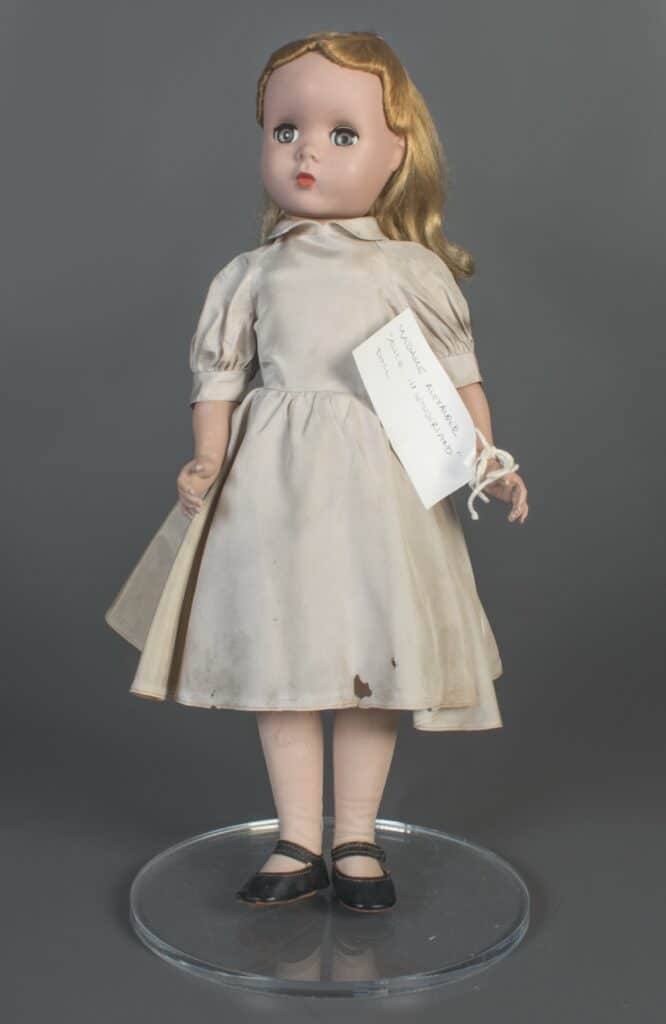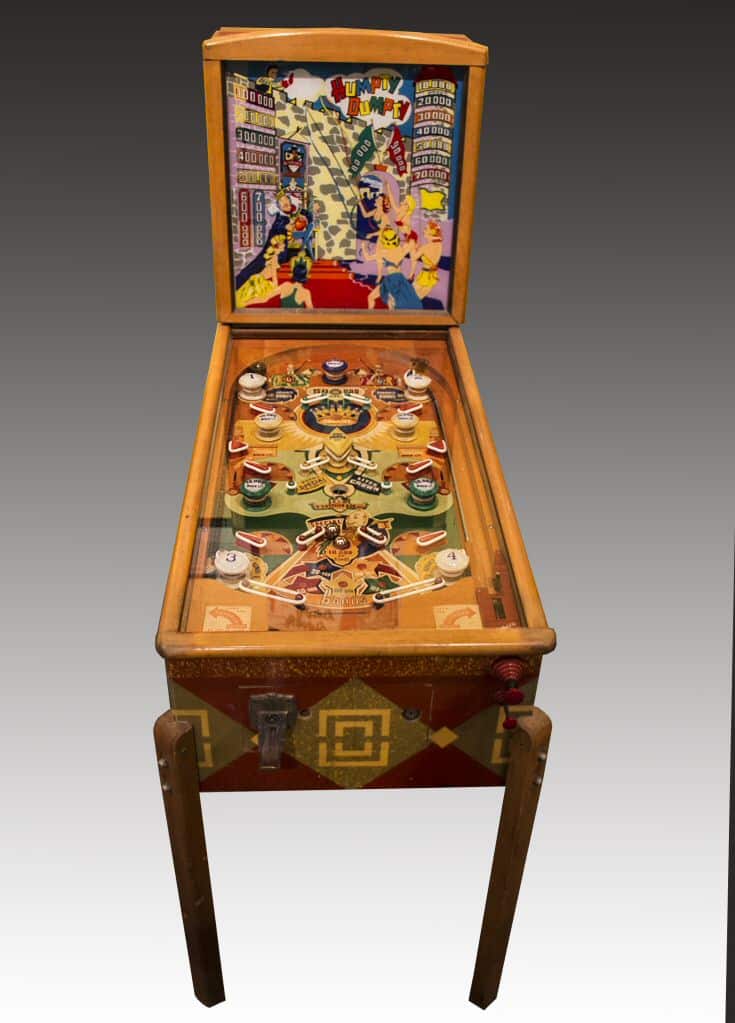The Toy and Game Industry in the U.S.

The U.S. toy industry, for obvious reasons, doesn’t have hundreds of years of history extending before the industrial revolution that Europe experienced. Before the early 1800s, if you were a child of wealthy parents, you likely had toys purchased from overseas for you or perhaps purchased in one of the new-fangled “department stores” in a major city. If you weren’t so fortunate, the few toys and games you most likely had were “folk toys.” These would be things like peg-based solitaire and other puzzles, checkers sets, tops, guns, corn husk or hand-sewn dolls, and hobby horses. These might have been made by family members or others in your local community, or you might have made them yourself. As the industrial revolution took hold of the toy industry, this would change. By the 1840s, every town in the U.S. had a toy store.
The first U.S. toy manufacturing company in the industrial era was Francis, Field & Francis, also known as the Philadelphia Tin Toy Manufactory, founded in 1838. Like many other early toy companies, they would import or create and then sell a variety of tin goods until, over time, toys became their main product. Their first manufactured toy was a horse-drawn fire engine. Many other firms followed in their footsteps, especially in New England.

Charles M. Crandall of Pennsylvania began making toys in his father’s woodworking and furniture factory at the age of 12, taking it over at only 16 when his father died. Crandall was best known in the early part of his career for lithographed blocks of all kinds. He convinced P.T. Barnum of circus fame to carry his line in Barnum’s museum for several weeks in 1871 and earned enough to focus on toys full-time. Crandall’s ball and maze puzzle or “dexterity game” Pigs in Clover went on to take the nation by storm. It stood at the center of a small controversy when some Washington senators were discovered playing a head-to-head tournament with the game in a cloakroom instead of spending their time in legislative session.
By 1916 there were enough toy and game manufacturers in the US for 80 of them to band together to form a trade association, one of the first of its kind. The Toy Manufacturers of America’s number one item on its founding list of goals was to have the federal government enact tariffs to raise the prices of imported toys to protect sales of products by U.S. companies. The Toy Association, the current incarnation of that earlier trade group, remains a large organization and a driving force in the industry to this day, running the American International Toy Fair in Manhattan annually.
Jewish Designers, Entrepreneurs, and Inventors in the US Toy Industry.
Before and during the World Wars, the U.S. Toy Industry was new, unregulated, and devoid of institutionalized antisemitism (official or unofficial policies that restricted or prevented Jews from being admitted to college, hired in businesses, and government, for example) unlike some older and more traditional industries. This made it a place where Jews could pursue opportunities and support their families. The same held true for the emerging film and comic book industries, which got off the ground in the first decades of the 1900s. The toy and game industries, as manufacturing businesses, went through ups and downs as factories were converted to the war efforts and assembly line workers found themselves drafted into the military.
The period following World War II saw significant growth that was influenced not just by the baby boom (creating more need for product) but also by the wider availability of new types of plastics that made manufacturing toys easier and less expensive. The toy business also benefited from the new medium called television that had begun to emerge in the 30s but was side-tracked by World War II and didn’t catch up to radio as a mass medium until the 1950s.
While toys and games generally prospered after World War II, institutionalized antisemitism was on the wane and more Jewish designers, entrepreneurs, and inventors were hired into established companies or more able to form their own firms. Unfortunately, antisemitism overall in the U.S., and elsewhere, has been on the rise since 1991.
Some of the hundreds of Jewish designers, entrepreneurs and inventors that have contributed to the world of play include…
Lewis I. Cohen, a stationer who began making playing cards in 1832 and invented one of the earliest color presses that could print all four colors of a playing card in one pass. His Consolidated Card Company went public in the 1880s after merging with several others.

Joshua Lionel (Cohen) Cowan was an independent consulting electrical engineer and inventor who created an electric toy train set from a promotional model he created for a retail store Christmas window display. When the store’s customers wanted to buy the train itself, Cowan became a model train manufacturer. At the time the Toy Manufacturers of America was formed, Lionel was the largest toy manufacturing company in the U.S.

Bertha “Beatrice” Alexander Behrman founded Madame Alexander Dolls and ranked as a rare female corporate executive in the 1920s. She began making dolls during World War I, when her stepfather’s doll hospital couldn’t get replacement parts from Germany. (During the early 1900s, when dolls were made of delicate and expensive porcelain, it was more cost-effective to rehabilitate them in a “healthcare facility” than to purchase a new one.)
Behrman sewed a prototype for a Red Cross Nurse doll and convinced the family to produce it commercially. That doll’s popularity saved the family firm from bankruptcy. She founded Madame Alexander Dolls with her husband in the 1920s, pioneering collectible dolls of characters from literature and film or of popular movie stars and politicians. In the 50s and 60s Madame Alexander was the leading doll company in the world.

David Gottlieb, founder of Gottlieb Pinball, broke new ground when his first game, Baffle Ball, revolutionized the industry and his pinball company reigned supreme for decades. A later Gottlieb Innovation added flippers to pinball to further shape the game into its current form. David and his family “repaid” the Chicago area by creating the Gottlieb Hospital.

Louis Marx began working in a tin toy company at the age of 16 after graduating high school. His practice of “skinning” the same tin toy in different ways efficiently expanded his product line and was one of the reasons Marx Toys was the biggest toy and game company in the world in the 1950s and 60s. Time magazine profiled Marx in a cover story that paired him with Santa Claus.

The Hassenfeld Brothers, founders of the company now known as Hasbro, consisted of Herman, Hillel, and Henry Hassenfeld. They left Poland for Providence, Rhode Island, to form a literal “rag trade” in 1923 (they bought and sold remnants from textile companies). The company later expanded to create another division to produce pencil cases and other school supplies. Henry’s son Merrill, led the move into toys by championing the production of Doctor and Nurse and Air-Raid Warden kits in the 1930s and 40s. He also acquired Jewish designer George Lerner’s Mr. Potato Head and made it the first toy advertised on television. The ads put them on the path to becoming one of the world’s largest toy and game companies, with extensive media production firms and properties as well. They coined the term “action figure” for their first G.I. Joe product. The company remained a family run business until 2003, when Alan Hassenfeld stepped down from the CEO position.

Marvin Glass was a prolific toy and game designer and inventor, whose work hard, play hard lifestyle (Playboy magazine did a feature article on his home), and CIA-worthy secrecy firmly established the role of the independent designer and inventor in the industry. His firm, Marvin Glass and Associates, was the leading independent toy and game design firm in the world from the 1950s into the 1980s, surviving even Glass’ death and spawning several successful design firms when it finally folded. Just a few of the Glass designed toys and games include Rock-Em Sock-Em Robots, Mouse Trap, Operation, Lite-Brite, and Inch Worm.
Eddy Goldfarb (originally named Adolf), a Navy veteran who spent off hours while on submarine duty during World War II, creating designs for toys. His first product, Yakity-Yak Talking Teeth (inspired, in part, by his mother-in-law) was co-developed with Marvin Glass. Goldfarb invented more than 800 toys and holds close to 300 patents.

Sam and Gary Stern, the father and son pinball entrepreneurs. Sam moved from being Williams Pinball’s best salesman, to part-owner and then founded his own coin-operated game company, Stern Electronics. Gary grew up in the pinball business, but decided to pursue a law career, briefly running his own law firm before he returned to pinball. After Stern Electronics closed, Gary ran Data East/Sega Pinball and eventually bought it and founded Stern Pinball, which is the oldest and largest pinball manufacturer in today’s market. Under his leadership the company produces three different pinball titles a year, designed around popular film, television, and music properties. Stern releases them in three different editions to provide affordably priced machines for game operators and to sustain a strong collector’s market. The Strong museum and Stern Pinball announced a partnership in 2016 that provides the museum with some of the company’s new machines.
Ruth and Elliot Handler were Mattel’s husband and wife founders. Ruth and Elliot met at a Hadassah (Jewish Women’s social organization) dance. The company name was created by merging the names of the third founder Harold “Matt” Mattson and Elliot’s names. Mattson became ill within a year of the company’s founding and sold out his share, but the name stuck. Their company originally made picture frames, with a sideline in doll house furniture made from the leftover scrap of the frames. Their first successful toy was a plastic ukulele called the Uke-A-Doodle. They bet the future of their company and their own personal finances on the decision to become the first sponsor of the Mickey Mouse Club television show, with the “Mousegetar” product placement as part of the deal. The bet paid off and led the way to the Barbie and Hot Wheels lines of toys, along with many others. The Handlers left the company in 1974, under a cloud related to an investigation in the financial reporting of the company. Like Hasbro, Mattel also holds extensive media production firms and properties.

Ralph Baer and his family left Nazi Germany two months before Kristallnacht, became an American citizen, and served in U.S. military intelligence during World War II. While working for Sanders Electronics, he became the “father” of the home video game system, creating a series of prototype systems to allow people to “play games on a television screen.” The final prototype, the “Brown Box” was licensed to become the Magnavox Odyssey. Baer and his team also created the first console peripheral, a light gun for a shooting gallery game.
During his lifetime Baer generated more than 150 patents, was named a Life Fellow of the International Electrical and Electronics Engineers, was inducted into the Inventors Hall of Fame, and awarded the National Medal of Technology by President George W. Bush. He also worked independently as a toy and game designer, sometimes collaborating with Marvin Glass Associates. His best-known game is Simon. The four notes Simon plays were picked by Baer from his experience playing the trumpet, knowing they’d always work together.
Baer was just the first of many Jewish video game designers, entrepreneurs, and inventors. Intriguingly both Taito and Sega were founded by Jewish entrepreneurs, Taito by Michael Kogan, whose family moved to Manchuria when he was young and eventually Japan. A serial entrepreneur, it was Kogan’s coin-op/vending machine business that would lead Taito into video games for arcades and consoles. Sega was founded by merging two vending machine and photo booth companies created by American Jewish entrepreneurs, initially to serve U.S. Army bases in Japan. As with many other coin-op companies they would transition into video games. They would also be one of the video game companies to try their hand at pinball during the height of the arcade boom.
By: Stephen Jacobs, Scholar-in-Residence at The Strong and a Professor of Interactive Games and Media at the Rochester Institute of Technology
 Hours 10 a.m.–5 p.m. | Fri. & Sat. till 8 p.m.
Hours 10 a.m.–5 p.m. | Fri. & Sat. till 8 p.m.